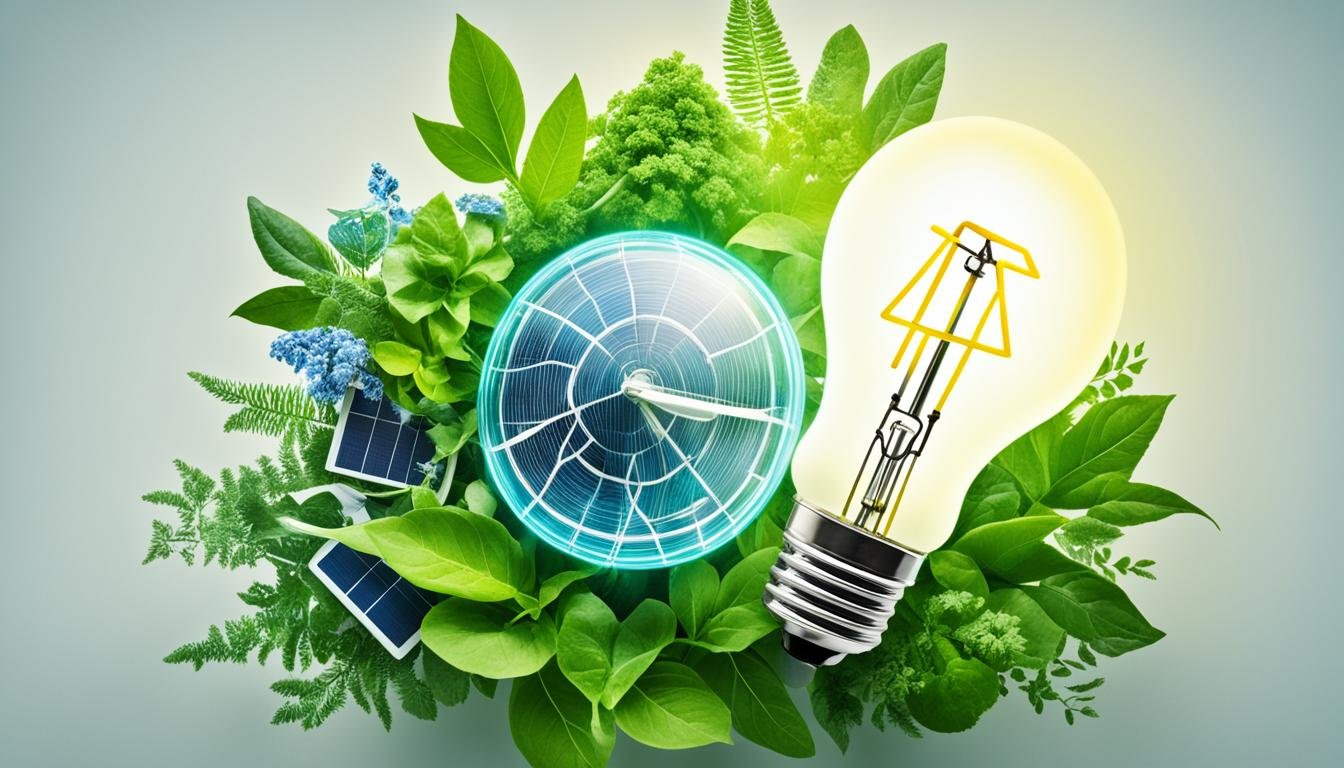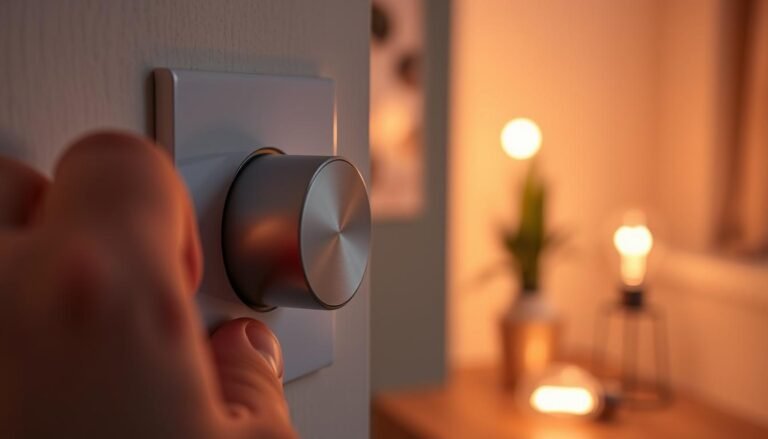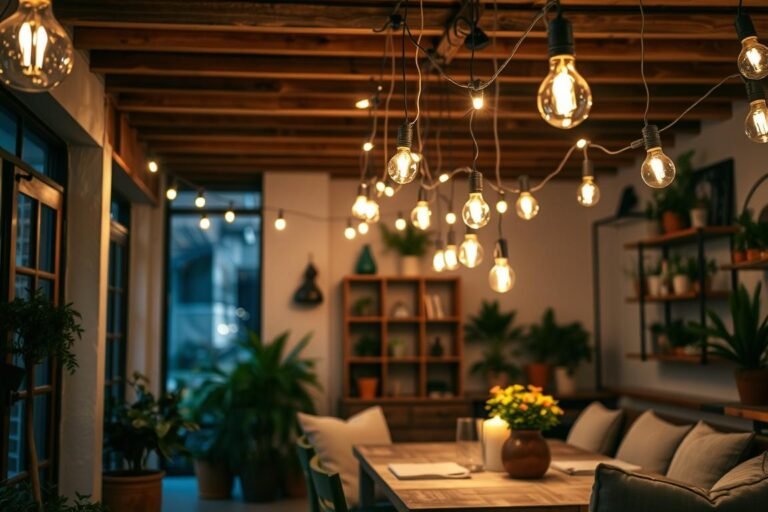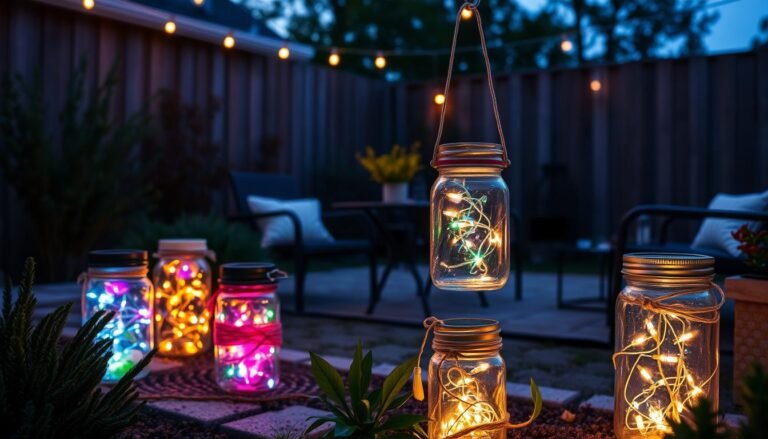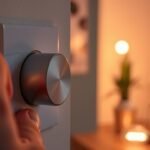Affiliate Disclosure: This post may contain affiliate links. If you make a purchase, we may earn a small commission at no extra cost to you.
Looking to cut your electricity costs? You’ve probably heard about the idea of dimming lights to save energy. This article looks at whether dimming the lights can really lower your electricity bill.
Dimmer switches are now found in many homes. They let you change the brightness of your lights. You might think that less bright lights mean less energy used. But, the truth might surprise you. The question remains, does dimming lights save electricity?
Key Takeaways
- Dimming lights can save electricity, but it depends on the type of light bulb and the dimmer technology used.
- Modern dimmer switches with Triac technology can reduce power consumption, while older dimmers may not provide the same energy savings.
- Pairing dimmable LED bulbs with compatible dimmer switches is the most energy-efficient lighting solution.
- Strategic use of dimming, such as lowering light levels during the day or in seldom-used areas, can lead to significant energy savings.
- Factors like bulb and dimmer compatibility, as well as wiring and electrical load, can affect the efficiency of a dimmer switch.
Understanding Dimmer Switches
Dimmer switches have an interesting history going back to the late 1800s. At first, they were used in places like cinemas. They controlled the light around projectors. By the 1960s, people started using them at home. They were a way to save energy and make the home feel cozy.
History of Dimmer Switches
In the late 1800s, the first dimmer switches were made. They weren’t like the ones we have now. People used them in theaters and concert halls. They were perfect for changing the mood with different lighting levels.
How Modern Dimmer Switches Work
Today’s dimmer switches are very different from the old ones. They work thanks to new led dimming technology. They don’t make heat to change the light like before. Now, they use Triac switches. These switches quickly turn the power on and off. This way of working uses less power and is a better option for homes and offices. It’s good for saving energy and it fits well with smart lighting systems.
Does Dimming Lights Save Electricity?
Dimmers have become a topic of debate. People look to them as a way to save on electricity. But, does dimming actually save electricity? Let’s see if dimming lights leads to energy savings.

The idea that dimming lights saves electricity is complex. It’s true that dimming reduces light produced. Yet, it affects energy use differently depending on the bulb and dimmer technology. Sometimes, dimming does lead to energy savings. In other cases, it might not.
To truly grasp if does dimming lights save electricity, we need to look deeper. We should learn about modern dimmer switches and light bulbs they work with. Doing this will help us figure out if dimming lights saves energy in our houses.
Benefits of Dimming Lights
Adding features like dim according to the time of day, prolong bulb lifespan, and strategic lighting control makes your home better. It can cut down on your power use. This makes your living space cozier and uses less energy.
Dim According to the Time of Day
Homes that get a lot of natural light don’t need as much artificial light. So, during the day, use less light inside if it’s bright out. This way, you use less energy and save money. Plus, it’s better for the planet. In the evening, you can adjust the brightness to create the mood you want.
Prolong Bulb Lifespan
Dimming your lights makes the bulbs last longer. Lowering the light’s brightness eases up on the bulb’s parts. This means the bulbs don’t wear out as fast. You’ll buy fewer bulbs over the years, which saves money and helps the environment.
Strategic Lighting Control
Using strategic lighting control helps you save energy and look better. You can adjust the light for what you’re doing or feeling. This cuts down on energy use. It also makes your lighting suit your needs, whether it’s for guests, relaxing, or working.
Dimming and Different Light Bulb Types
Not all light bulb types dim the same way. Knowing how bulbs react to dimming can save a lot of energy. This means you can adjust your lighting to save power better.
Incandescent Lights
Dimming incandescent lights doesn’t cut their power use. This is because dimming them turns the unused electricity into heat. Although the light gets dimmer, the bulb still uses the same energy. You might save more energy by using a lower wattage bulb instead of a dimmer.
Halogen Lights
Halogen lights act like incandescent ones when dimmed. The dimmer changes the electricity to the bulb, so the light is less bright. But, this doesn’t save much energy. Halogen bulbs still use a lot of power, even when dimmed.
Dimmer-Compatible CFL Lights
Dimming is tricky for compact fluorescent (CFL) lights. Most CFLs don’t work well with dimmers. Luckily, there are dimmer-compatible CFL lights made for this. Using these with a dimmer can save some energy.
LED Lights
LED lights are great for saving energy when dimmed. They work perfectly with dimmer switches. Dimmed LED bulbs use much less electricity. This makes them the top choice for saving power while keeping the lights on.

does dimming lights save electricity
Modern dimmer switches work very differently from the old ones. Thanks to new tech, they no longer need to turn energy into heat to change brightness. Instead, they use a Triac switch to quickly turn electricity on and off. This reduces power going into the circuit. Essentially, this makes modern dimmer switches more energy-efficient than before.
Triac Switch Technology
The modern triac switch technology makes controlling light levels more effective. By quickly switching electricity on and off, the triac switch lowers the power flowing to the bulb. It does this without turning the unused energy into heat, a problem with older switches. Because of this, you can adjust your lighting without losing out on saving energy.
Energy Savings with Dimming
Energy savings with dimming are a real benefit when using a modern dimmer switch. By setting the light output lower, the dimmer uses less power. This decreases your electricity bills. Dimming is thus a smart way to manage your lighting and lower your home’s energy use.

Smart Bulbs and Dimming
Smart bulbs change our idea of home lighting. They do more than just light up a room. These smart bulbs can dim, change color, and link to the internet. This lets you adjust the lighting from home or away.
Features of Smart Bulbs
Smart bulbs can dim the light levels, making a room cozy. This feature can also reduce your energy bills. You can change brightness based on what you’re doing, like relaxing or hosting a party.
They can also change color. You can pick from many hues for any mood. Choose warm tones for a relaxing evening or bright shades for energy.
Integration with Home Automation
The real magic of smart bulbs is how they join home automation. Link them to a hub or voice assistant. Then, you can control lights with your phone or voice command from anywhere.
You can set schedules or make custom scenes. This level of control is something traditional lights can’t offer. Smart bulbs mix technology with style to make your home more inviting and efficient.

Factors Affecting Dimmer Switch Efficiency
Not all dimmer switches help save energy equally. How well the bulbs and the switch work together matters. So does the wiring in your house and how much electricity you use. These things affect how well your dimmer switch works.
Bulb and Dimmer Compatibility
Dimmer switches don’t always work with all light bulbs. For example, a dimmer that works with incandescent bulbs might not work with LED lights. This mismatch can make the lights hum or even break the bulbs. It’s key to make sure your bulb and dimmer match well for safety and to save energy.
Wiring and Electrical Load
If your home’s wiring is bad, it can affect how well your dimmer switch works. Problems like voltage changes or old wiring can make the lights flicker. This not only messes with your lighting but can be a fire hazard. Check your home’s wiring and electrical load often to avoid these issues and keep your dimmer switch running smoothly.

Conclusion
Dimming lights to save electricity isn’t a simple yes or no. It all relies on the light bulb type, the dimmer switch technology, and the dimming feature use. Today’s modern dimmer switches with Triac technology can cut energy use. But, older switches might not do this effectively.
Dimming is great for cutting down electricity use. It works best with energy-efficient LED bulbs if used wisely all over the house. Knowing the pros and cons of dimming helps home owners. They can choose the best setup for lighting and save energy.
Smart lighting control and LED dimming technology are key. They allow satisfyingly dim dimmable lights. This can cut energy and lessen power use and electricity demand. Choosing ecofriendly lighting and adjusting light levels wisely helps. It lets you lower energy costs and enjoy dimmer switches’ benefits.
FAQ
Do dimmer switches actually save electricity?
How do different light bulb types affect energy savings with dimming?
Can dimming lights throughout the day help save energy?
What are the benefits of using dimmer switches in the home?
What factors can affect the efficiency of a dimmer switch?
How can smart bulbs and home automation enhance dimming capabilities?
Check out our FREE Calculators on our Resources Page
Source Links
- https://www.albertcorn.com.au/do-dimmer-switches-save-power/
- https://www.electricrate.com/data-center/dimmed-lights/

